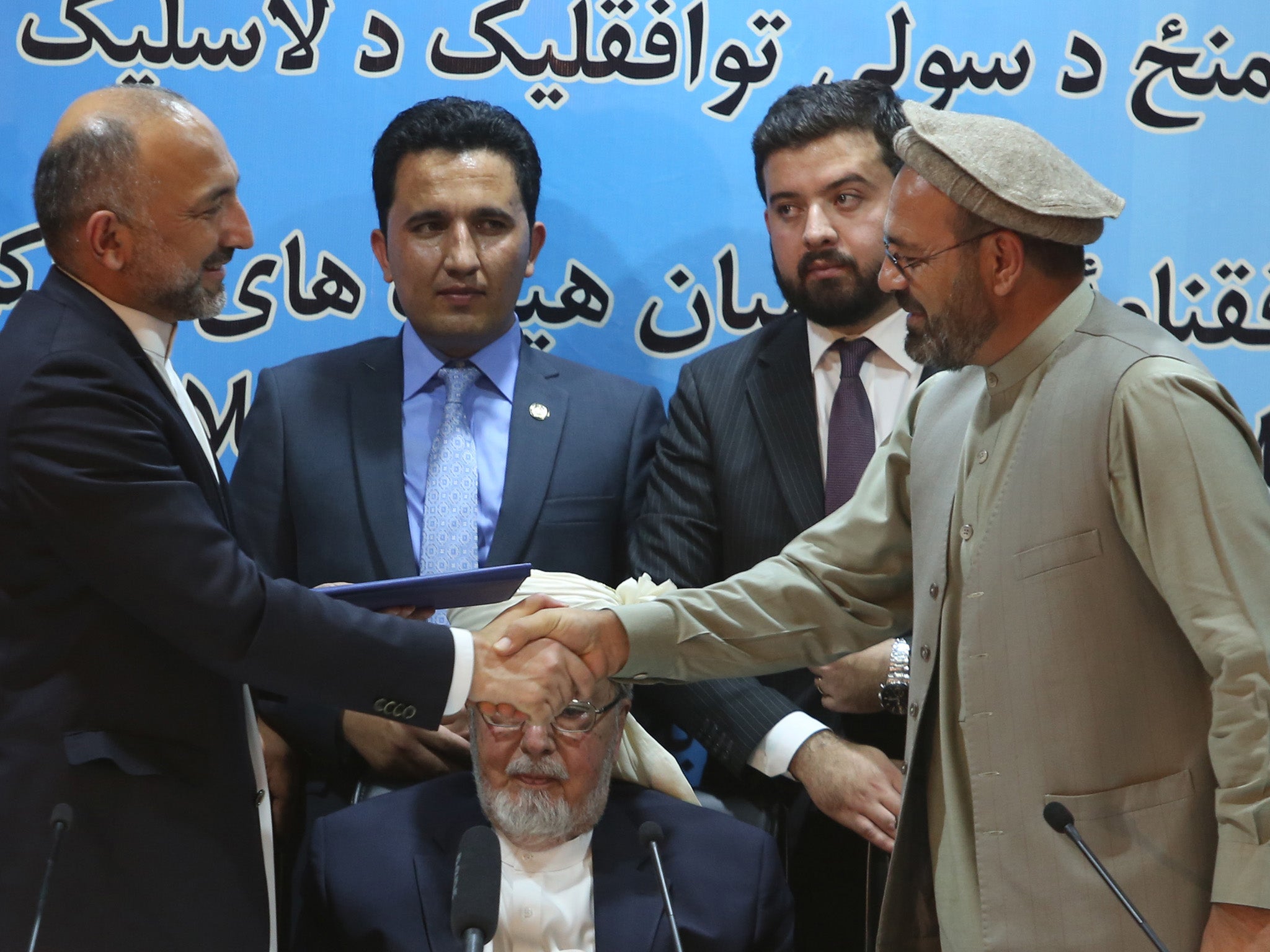It’s 15 years since the fall of the Taliban in Afghanistan, but thousands of refugees are still fleeing their country
It estimated that Washington has spent around $110bn on Afghan reconstruction since 2001 – more than the cost of the Marshall Plan that helped rebuild Europe after the Second World War

Some 15 years after the collapse of the Taliban government in Afghanistan, the country stands at a crossroads. While gains have been made since the regime’s fall on 9 December 2001, the nation faces an array of security, political, and economic risks, despite the fact that more than £100bn has been spent by Washington alone in the country.
The biggest challenge is the country’s internal security situation, with insurgency from Taliban militants having spread to more than 30 of 34 provinces. Since 2009, the UN Assistance Mission in Afghanistan has recorded 23,000 conflict-related deaths and 41,000 injuries, with some 70 per cent of people living in major cities residing in makeshift camps, according to the Norwegian Refugee Council.
In the midst of this chaos, many Afghans are leaving the country. In 2015, more than 250,000 refugees and migrants arriving in Europe were from Afghanistan, second to Syrians, according to the Office of the UN High Commissioner for Refugees.
US military officials recently asserted that the balance between the Taliban and Afghan government-led forces is effectively a “stalemate”. This is despite foreign military losses reaching some 3,500 killed and 33,000 wounded by the end of 2014, with US personnel accounting for the majority of these casualties. The conflict has become Washington's longest military intervention since the Vietnam War.
The continuing foreign presence includes around 8,500 US military personnel. While most Nato troops left in 2014, Washington will (subject to changes from the incoming Trump administration) keep these officers in the country until at least the end of 2017. The international force remains vital for ensuring training and cohesion for the approximately 350,000-strong Afghan police and military personnel, which may otherwise disintegrate.
Fears have been repeatedly raised that the current foreign force, now less than a 15th of the previously 150,000-strong combat presence, is not big enough. US Senator John McCain, chair of the Senate Armed Services Committee, has said that the international drawdown has left the country vulnerable to an upsurge in Taliban violence.
Hence, the Afghan government has been advancing currently stalled reconciliation and peace talks with the remnants of the Taliban regime that collapsed in 2001. The influence of neighbouring powers, especially Pakistan, could be key in facilitating any eventual deal. While an agreement looks a long way off, the government secured a similar deal with the armed opposition group of the Hezb-i-Islami, led by Gulbuddin Hekmatyar, in September.
The news is not good on the economic front either, despite a fresh $15.2bn in foreign aid being pledged by the international community in September. Reconstruction has been slow, unemployment remains above 40 per cent, and over 1 million Afghans are internally displaced in the country, with more than 3 million more refugees believed to be in Pakistan and Iran.
It is estimated that Washington has spent around $110bn on Afghan reconstruction since 2001 – more than the total cost of the Marshall Plan that helped to rebuild Europe after the Second World War. But this has not been optimally spent. It is reported that around 80 per cent of the money has been given to US organisations in military, security and maintenance contracts, and consultancy projects.
Since 2001, the Afghan economy has not diversified from drug exports such as opium and heroin, despite the fact that the country is abundant in natural resources, with an estimated value of some $3trn. Corruption is another related problem; Transparency International ranks Afghanistan as the third most corrupt state in the world.
Despite this difficult picture, there remains cause for optimism – not least because numerous gains have been achieved since the unseating of the Taliban. One success is the country’s fledgling democracy. The country’s national unity government has also survived more than two years after a landmark power-sharing agreement was reached in 2014 between President Ashraf Ghani and the Chief Executive Abdullah Abdullah, the former foreign minister. This followed a disputed presidential ballot between Ghani and Abdullah when up to 1 million votes were thrown out for fraud.
The creation of the national unity government, and the election of Ghani, represented the first democratic transfer of power in the country’s history. While there have been significant tensions between him and Abdullah that could yet explode in the next presidential election, the fact that the national unity government has not collapsed has helped consolidate the power and legitimacy of the new post-Taliban political system.
Other gains include Afghanistan’s accession to the World Trade Organisation and wider moves to revive economic links with the outside world, including the modern Silk Road, a new rail route connecting the country to China and Central Asia, and an electricity grid project across Afghanistan, Turkmenistan, Uzbekistan, and Pakistan. Meanwhile, there are 10 million children, including girls, enrolled in school; there is a greater recognition of women’s rights; and technologies such as the internet and mobile phones are now available across the nation.
But the country is still at a crossroads. These gains, and Afghanistan’s fledgling democracy, remain fragile. If the reconciliation process with the remaining remnants of Taliban forces cannot be achieved quickly, there is the serious prospect of greater political, security and economic instability.
Andrew Hammond is an associate at LSE IDEAS (the Centre for International Affairs, Diplomacy and Strategy) at the London School of Economics

Join our commenting forum
Join thought-provoking conversations, follow other Independent readers and see their replies